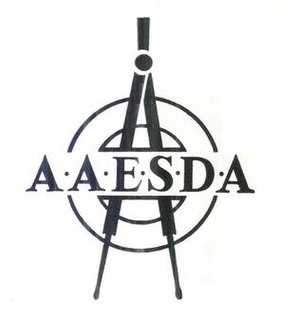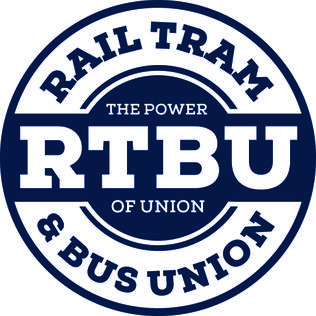The Australian labour movement began in the early 19th century and since the late 19th century has included industrial and political wings. Trade unions in Australia may be organised on the basis of craft unionism, general unionism, or industrial unionism. Almost all unions in Australia are affiliated with the Australian Council of Trade Unions (ACTU), many of which have undergone a significant process of amalgamations, especially in the late 1980s and early 1990s. The leadership and membership of unions hold and have at other times held a wide range of political views, including communist, socialist and right-wing views.

The Australian Manufacturing Workers Union (AMWU), or more fully the Automotive, Food, Metals, Engineering, Printing and Kindred Industries Union, is an Australian trade union. The AMWU represents a broad range of workers in the manufacturing sector, as well as associated industries, and is affiliated to the Australian Council of Trade Unions.

The Australian Workers' Union (AWU) is one of Australia's largest and oldest trade unions. It traces its origins to unions founded in the pastoral and mining industries in the 1880s and currently has approximately 80,000 members. It has exercised an outsized influence on the Australian trade union movement and on the Australian Labor Party throughout its history.

The Maritime Union of Australia (MUA) was a union which covered waterside workers, seafarers, port workers, professional divers, and office workers associated with Australian ports. The MUA was formed in 1993 with merger of the Seamen's Union of Australia and the Waterside Workers' Federation of Australia.

The Construction, Forestry, Maritime, Mining and Energy Union is Australia's main trade union in construction, forestry, maritime, mining, energy, textile, clothing and footwear production. The CFMMEU is affiliated with the Australian Council of Trade Unions, with the Australian Labor Party and with the World Federation of Trade Unions.
The Seamen's Union of Australia (SUA) was the principal trade union for merchant seamen in Australia from 1876 to 1991. The SUA developed a reputation as one of the most militant trade unions in Australia and was closely associated with the communist movement in Australia. The SUA merged in 1993 with the Waterside Workers' Federation to become the Maritime Union of Australia (MUA).
Firemen and Deckhands' Union of New South Wales (FDU) was an Australian trade union existing between 1901 and 1993. The union covered deckhands employed on ferries, tugs, launches, lighters and hoppers, as well as enginemen, wharf hands, turnstill hands, change hands, firemen, motorboat coxmen and assistants. The FDU operated a closed shop, with all labour in the industry provided to employers through the union.
Federated Marine Stewards and Pantrymen's Association of Australasia was an Australian trade union established in 1884, and existing as a federal union from 1909 to 1988. The association represented marine stewards and stewardesses, marine pantrymen and crew attendants. The union operated a closed shop, with all workers employed in the industry members of the union, and operated on a 'no OK card - no job' principle.
Marine Cooks, Bakers and Butchers' Association of Australasia was an Australian trade union. It was formed in Melbourne in August 1907 as a breakaway group from the Federated Stewards and Cooks’ Union of Australia and was registered under the Commonwealth Conciliation and Arbitration Act 1904 in January 1908 and affiliated with the Trades and Labour Council in April 1908. The Association represented workers employed as cooks, bakers, butchers and other food preparation roles aboard ships in Australia and New Zealand. In November 1908 Mr Justice Higgins issued a judgement on rates of pay and hours for marine cooks in a case involving the Association and the Commonwealth Steamship Owners' Association. The Association moved its Head Office moved from Melbourne to Sydney in January 1915.
Manufacturing Grocers' Employees' Federation of Australia (M.G.U.) was an Australian trade union existing between 1906 and 1988. The union was first established as the Federated Candle, Soap, Soda & Starch Employees' Union of Australia, before changing its name in 1914. The union represented workers employed in manufacturing grocers' sundries and non-edible grocery products, particularly in the southern states of South Australia and Victoria. In 1988 the union amalgamated with the Federated Millers and Mill Employees' Union to form the Federated Millers and Manufacturing Grocers Employees' Association of Australia, which in turn merged with a number of unions to form the National Union of Workers.
The Federated Cold Storage and Meat Preserving Employees' Union (FCSMPEU) was an Australian trade union which existed between 1908 and 1992. The union represented workers employed in refrigeration, and the production of ice, dairy products, preserved meat, fish, game and poultry in the southern states of Victoria, Tasmania and South Australia. The union was initially known as the Cold Storage Union of Victoria before changing its name in 1915. The union maintained 100 per cent membership, and most workplaces were closed shops.
The Federated Rubber and Allied Workers' Union of Australia was an Australian trade union which existed between 1909 and 1988. The union represented workers employed in manufacturing rubber, plastic, electrical cable, adhesive and abrasive products in Australia.
The Australian Boot Trade Employees' Federation (ABTEF) was an Australian trade union which existed from 1908 to 1987. The union represented all workers employed in footwear manufacturing in Australia.
The Australian Textile Workers' Union (ATWU) was an Australian trade union which existed from 1919 to 1987. The ATWU represented Australian workers employed in the manufacture of textiles, including the spinning, weaving, dyeing and finishing of all types of fibres. Later, the union also represented workers employed in manufacturing felt hatting.
The Clothing and Allied Trades Union of Australia (CATU) was an Australian trade union which existed between 1907 and 1992. The CATU represented workers employed in the manufacture of clothing and manchester goods, including pressers, cutters and machinists. Approximately 85 percent of the union's membership was female.

The Federated Ironworkers' Association of Australia (FIA) was an Australian trade union which existed between 1911 and 1991. It represented labourers and semi-skilled workers employed in the steel industry and ironworking, and later also the chemical industry.

Padraig "Paddy" Crumlin is an Australian trade unionist. He has been the President of the International Transport Workers' Federation (ITF) since 2010 and the International President of the Construction, Forestry, Maritime, Mining and Energy Union since that union was established in 2018. He was formerly the National Secretary of the Maritime Union of Australia (MUA) from 2010 until its amalgamation into the new CFMMEU in 2018.

The Association of Draughting Supervisory and Technical Employees (ADSTE), originally known as the Association of Architects, Engineers, Surveyors and Draughtsmen of Australia (AAESDA), was an Australian trade union which existed between 1915 and 1991. It represented white collar and technical-grade employees in both the private sector and the public service.

The Rail, Tram and Bus Union Victorian branch or RTBU Victoria is the state branch of the RTBU in Victoria. Originally formed in 1993 as the Victorian branch of the Public Transport Union and renamed the RTBU in 1998, the RTBU Victoria today represents nearly 8000 members across Rail Operations, Tramways, Locomotive, Infrastructure and Administrative areas of Victoria's public transport industry.
The Federated Moulders' (Metals) Union of Australia (FMMUA) was an Australian trade union which existed between 1899 and 1983. It represented moulders – skilled tradesmen who fabricated the moulds for casting metal products in foundries. In spite of only organising within a single skilled occupation, which kept total membership low, the vital position of moulders in major industries such as mining, manufacturing and the railways, ensured that the union remained industrially powerful with a reputation for being highly militant.







